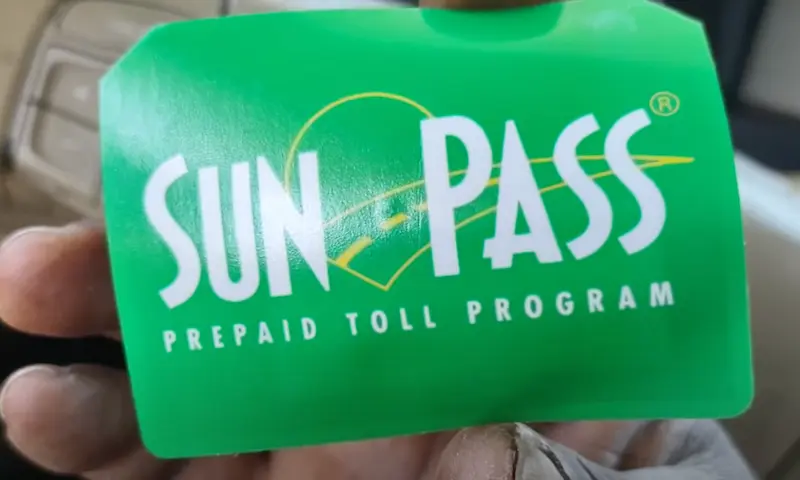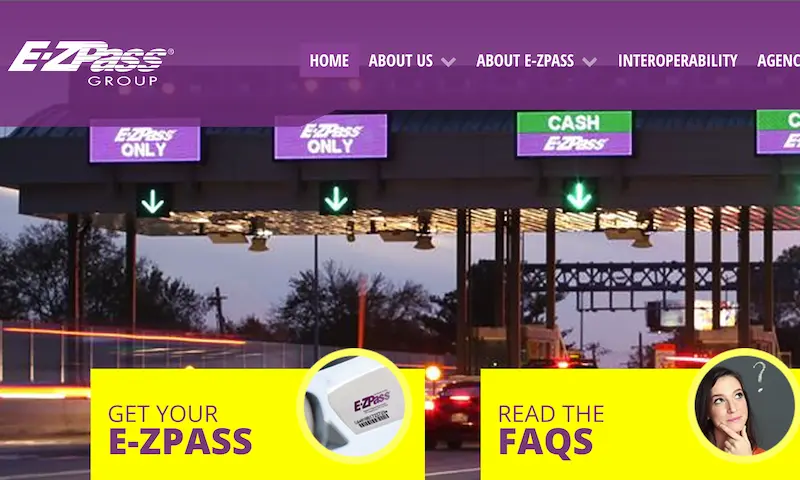Tired of fumbling for cash at toll booths or getting those unexpected Toll-By-Plate bills in your mailbox? Florida’s electronic toll collection systems—SunPass and E-Pass—offer convenient alternatives, but choosing between them isn’t always straightforward. Let’s break down these toll transponder options to help you decide which makes the most sense for your driving habits.
What Are SunPass and E-Pass?
SunPass and E-Pass are electronic toll collection systems that let you zip through toll plazas without stopping. SunPass is operated by Florida’s Department of Transportation (FDOT) through the Florida Turnpike Enterprise, while E-Pass is managed by the Central Florida Expressway Authority (CFX).
Both use transponders that mount on your windshield and communicate with toll plaza sensors. When you drive through, the system automatically deducts the toll from your prepaid account—no stopping, no cash needed.
Ownership and Revenue Distribution
The biggest difference between these systems is where your money goes:
- SunPass: Revenue goes to FDOT and is distributed across the state, funding highways and infrastructure projects throughout Florida’s 11 transportation districts. In FY2024, SunPass is projected to generate about $2.51 billion in revenue.
- E-Pass: Money stays primarily within Central Florida, with 93% of the $487 million FY2024 budget reinvested in local roads and expressways around Orlando and Orange County.
This difference matters if you care about where your toll dollars are spent—statewide infrastructure or primarily Central Florida improvements.
Transponder Options and Costs
Let’s compare the transponder options and their associated costs:
| Transponder | Initial Cost | Monthly Fee | Replacement Cost | Minimum Balance |
|---|---|---|---|---|
| E-Pass Sticker | Free | None | $5.00 | $10 |
| E-Pass Uni | $14.95 | None | $10.00 | $10 |
| SunPass Mini | $4.99 | None | $14.95 | $10 |
| SunPass PRO | $14.95 | None | $14.95 | $10 |
The basic sticker transponders (E-Pass Sticker and SunPass Mini) work great for most Florida-only travel. For multi-state travel, the premium options (E-Pass Uni and SunPass PRO) are worth considering.
Coverage Areas: Where Can You Use Them?
In Florida
Both transponders work throughout Florida, but there are some nuances:
- SunPass: Dominates in South Florida with 98% lane coverage on the Turnpike Homestead Extension and 95 Express lanes.
- E-Pass: Stronger integration in Central Florida, especially on the 408/417/429 expressways around Orlando.
According to recent studies, there’s 100% compatibility on FDOT-maintained roads, while SunPass users have about 87% compatibility on CFX roads, and E-Pass users enjoy 92% compatibility on Turnpike roads.
Multi-State Coverage
When traveling beyond Florida’s borders, coverage differences become important:
SunPass PRO works in 22 states including:
- The entire E-ZPass network (from Maine to Virginia)
- Toll roads in Kansas, Oklahoma, and Texas
- Limited compatibility in California
E-Pass Uni works in 19 states including:
- SEPS consortium states (Florida, Georgia, North Carolina)
- Partial E-ZPass compatibility (Maryland to Ohio)
- No support in western states
If you frequently travel to the Northeast, SunPass PRO might be your better option. For southeastern travel, the E-Pass Uni performs admirably.
Toll Discounts and Savings
Thanks to the 2024 Toll Relief Program, both systems offer tiered discounts:
| Monthly Transactions | E-Pass Discount | SunPass Discount |
|---|---|---|
| 1-34 | 15% | 25% |
| 35+ | 50%* | 50%* |
*State-mandated credits available through December 2024
On CFX roads around Orlando, E-Pass maintains about a 5.7% price advantage:
- SR 408: $1.98 with E-Pass vs. $2.10 with SunPass
- SR 417: $3.15 with E-Pass vs. $3.33 with SunPass
Technology and Reliability
Both systems use RFID technology but with slight differences:
| Feature | E-Pass Uni | SunPass PRO |
|---|---|---|
| Frequency | 915 MHz | 902-928 MHz |
| Read Range | 30 feet | 25 feet |
| Transaction Speed | Slightly faster | Standard |
| Motorcycle Compatible | Yes (special mount) | Yes (windshield only) |
E-Pass shows slightly better reliability metrics according to 2023 data:
| Issue | E-Pass Rate | SunPass Rate |
|---|---|---|
| Missed reads | 0.03% | 0.07% |
| Double charges | 0.01% | 0.05% |
| Account sync errors | 0.12% | 0.19% |
These small differences probably won’t impact most drivers, but might matter if you use toll roads daily.
Account Features and User Experience
Both systems offer online portals and mobile apps, but with different features:
E-Pass Advantages:
- Real-time transaction updates
- Manage up to 10 vehicles on one account
- Integration with Orlando International Airport parking
SunPass Advantages:
- EasyPay automatic account replenishment
- Hard Rock Stadium parking integration
- Special discounts for electric and hybrid vehicles on I-95 express lanes
A recent JD Power study gave E-Pass higher customer satisfaction ratings (4.1/5 vs. 3.6/5), with particularly good marks for its mobile app and dispute resolution process.
Special Integration Features
Both transponders offer integration with facilities beyond just toll roads:
SunPass Works With:
- Parking at 5 major Florida airports
- Select Florida seaports
- Hard Rock Stadium and some other venues
E-Pass Works With:
- Orlando International Airport (MCO) parking
- Port Canaveral parking
- Various Central Florida venues
Making Your Decision: Which Is Right for You?
Choose E-Pass If:
- You primarily drive in Central Florida (Orlando area)
- You want your toll money reinvested locally
- You occasionally travel to Georgia or the Carolinas
- You frequently use Orlando International Airport parking
- You appreciate slightly lower toll rates on CFX roads
Choose SunPass If:
- You frequently drive in South Florida or across multiple Florida regions
- You often take trips to the Northeast (E-ZPass states)
- You drive an electric or hybrid vehicle and use I-95 express lanes
- You want slightly higher discounts (25% vs. 15%) for occasional toll road use
Why Not Get Both?
Some Florida residents maintain both transponders, using each where it provides the most benefits. This approach works well if you:
- Live in Central Florida but frequently travel south
- Want maximum coverage across all toll systems
- Prefer to keep separate accounts for personal and business travel
Just remember to only keep one transponder active in your vehicle at a time to avoid double charges.
Read also: SunPass Text Message Scams: How to Protect Yourself
Future Developments
Florida’s toll systems continue to evolve:
- OCR plate recognition technology is reducing dependence on physical transponders
- Pilot programs for blockchain-based tolling are underway
- Dynamic pricing based on traffic conditions is expanding
The 2025 Florida Mobility Initiative may eventually create a unified transponder system, though negotiations between agencies are ongoing.
The Bottom Line
For most drivers, either system will work perfectly fine throughout Florida. Your choice ultimately comes down to:
- Where you drive most often
- Whether you travel out of state (and where)
- If you care about where your toll money is invested
- Which special integrations (parking, venues) matter to you
Whichever you choose, both SunPass and E-Pass offer significant time savings and discounts compared to cash or Toll-By-Plate options.
















